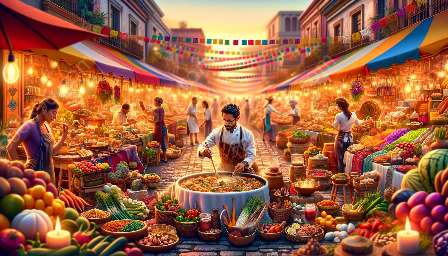When delving into the historical significance of Cuban cuisine, one must recognize its integral role in the broader landscape of Latin American culinary traditions. The roots of Cuban cuisine run deep, reflecting a complex tapestry of cultural influences that have helped shape its distinctive flavors and dishes.
The Historical Evolution
The history of Cuban cuisine is a reflection of the country's diverse cultural heritage, with influences from indigenous Taino, Spanish, African, and Caribbean cuisines. The emergence of Cuban cuisine as a unique culinary tradition can be traced back to the arrival of colonists from Spain in the 15th century.
Spanish settlers introduced a wide range of ingredients and cooking techniques to the island, including rice, citrus fruits, olives, and various spices. The fusion of Spanish culinary traditions with indigenous Taino and African culinary practices laid the foundation for what would become the rich and flavorful Cuban cuisine we know today.
Key Ingredients and Influences
Cuban cuisine is characterized by its creative use of ingredients that are intrinsic to the island's landscape, such as plantains, yucca, black beans, and pork. The cuisine also showcases an array of aromatic herbs and spices, including oregano, cumin, and bay leaves, which contribute to its vibrant and robust flavors.
The African influence on Cuban cuisine is particularly significant, with the introduction of cooking techniques like slow-roasting, stewing, and marinating, as well as the use of ingredients such as okra, taro, and various root vegetables.
Furthermore, the blending of Indigenous, Spanish, and African culinary traditions resulted in the development of iconic Cuban dishes such as arroz con pollo (rice with chicken), ropa vieja (shredded beef stew), and tostones (fried green plantains). These dishes reflect the convergence of diverse cultural influences that define the essence of Cuban cuisine.
The Intersection with Latin American Cuisine History
Cuban cuisine occupies a unique place within the broader context of Latin American culinary history, showcasing both its distinctiveness and its connections to the culinary traditions of the region. The convergence of indigenous, European, and African culinary influences within the Cuban gastronomic landscape highlights the interconnectedness of Latin American cuisines.
The Spanish colonial legacy in Cuba is linked to the culinary heritage shared across many Latin American countries, such as the use of staple ingredients like corn, beans, and a wide array of tropical fruits. This intersection of shared ingredients and cooking techniques serves as a reminder of the interconnected evolution of Latin American cuisine and its deep historical significance.
A Cultural Legacy
More than just a means of sustenance, Cuban cuisine is a reflection of the country's rich cultural history and the resilient spirit of its people. The fusion of diverse influences over centuries has resulted in a culinary tapestry that serves as a testament to the resilience and creativity of Cuban culinary traditions.
From the vibrant street food culture that dots the bustling avenues of Havana to the time-honored family recipes passed down through generations, Cuban cuisine embodies the spirit of community and celebration. It serves as a tangible link to the past and a source of pride for the present, representing a living connection to the historical and cultural fabric of the nation.
In Conclusion
Cuban cuisine stands as a testament to the power of cultural exchange and the enduring legacy of historical intersections. Its significance within the greater context of Latin American cuisine history is rooted in the convergence of diverse culinary influences that have shaped the flavors and traditions we cherish today. By exploring the history of Cuban cuisine, one gains a deeper appreciation for the interconnectedness of culinary legacies and the enduring impact of cultural exchange on the world's gastronomic tapestry.

